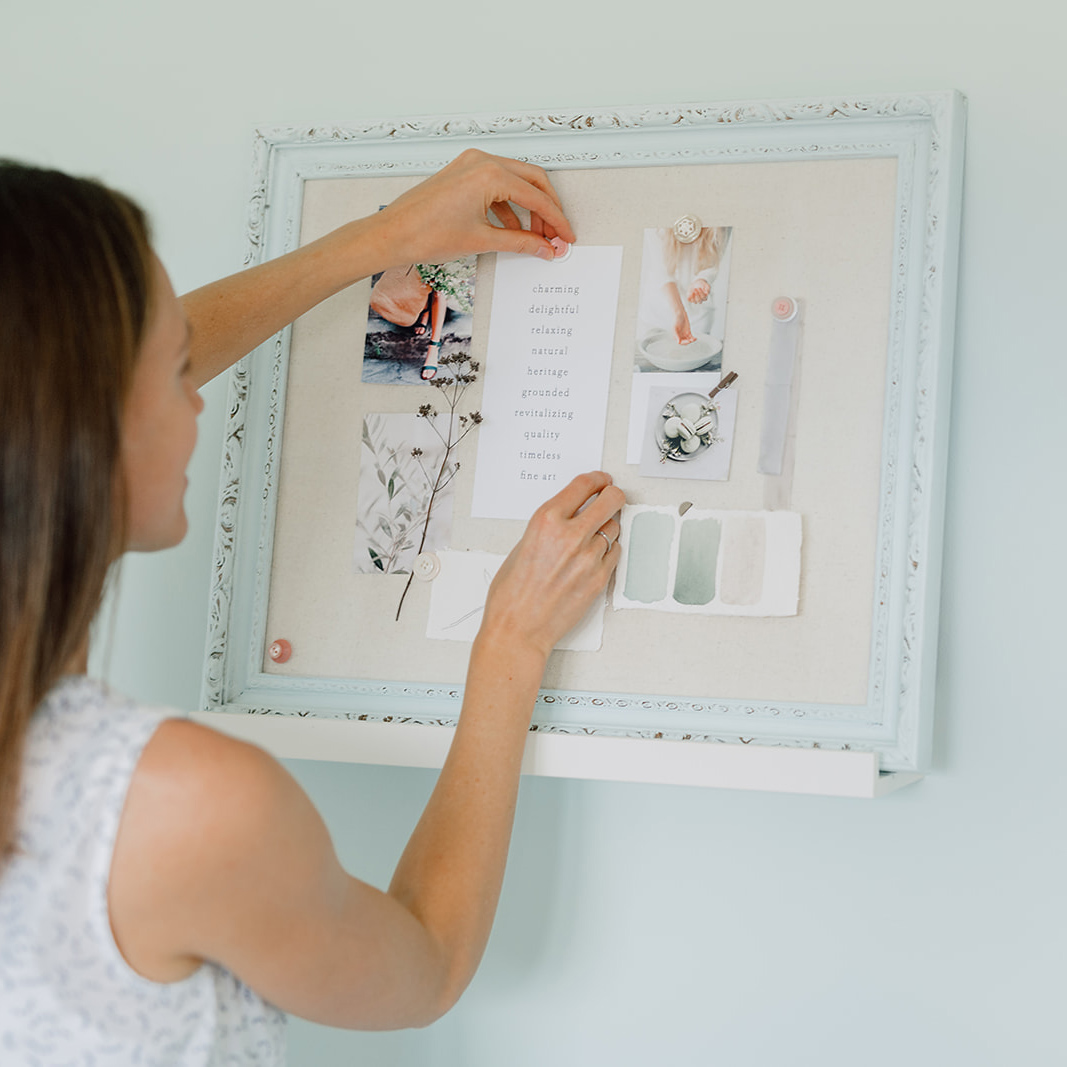With so many options to create a diy logo design for your business, it’s important not to overlook this essential first step.
To DIY or not to DIY? This is a question every small business owner regularly faces about some aspect of running their business. Should I do it all myself…copywriting, marketing, production, design? When you’re starting a new endeavor, a DIY logo design might be one of the first items on your long to-do list. However, there’s one very important, dare I say, crucial step that needs to come first if you want to set your business up for long-term success.
That step is having a BRAND STRATEGY.
What you’ll learn from this post
This post outlines the three main areas that you need to gain clarity about before DIY-ing anything in your business. Specifically, we’ll look at:
- Whether or not a DIY logo design is right for you
- The three pillars of a brand strategy
- Translating your strategy into a mood board
- Brand strategy solutions for your business
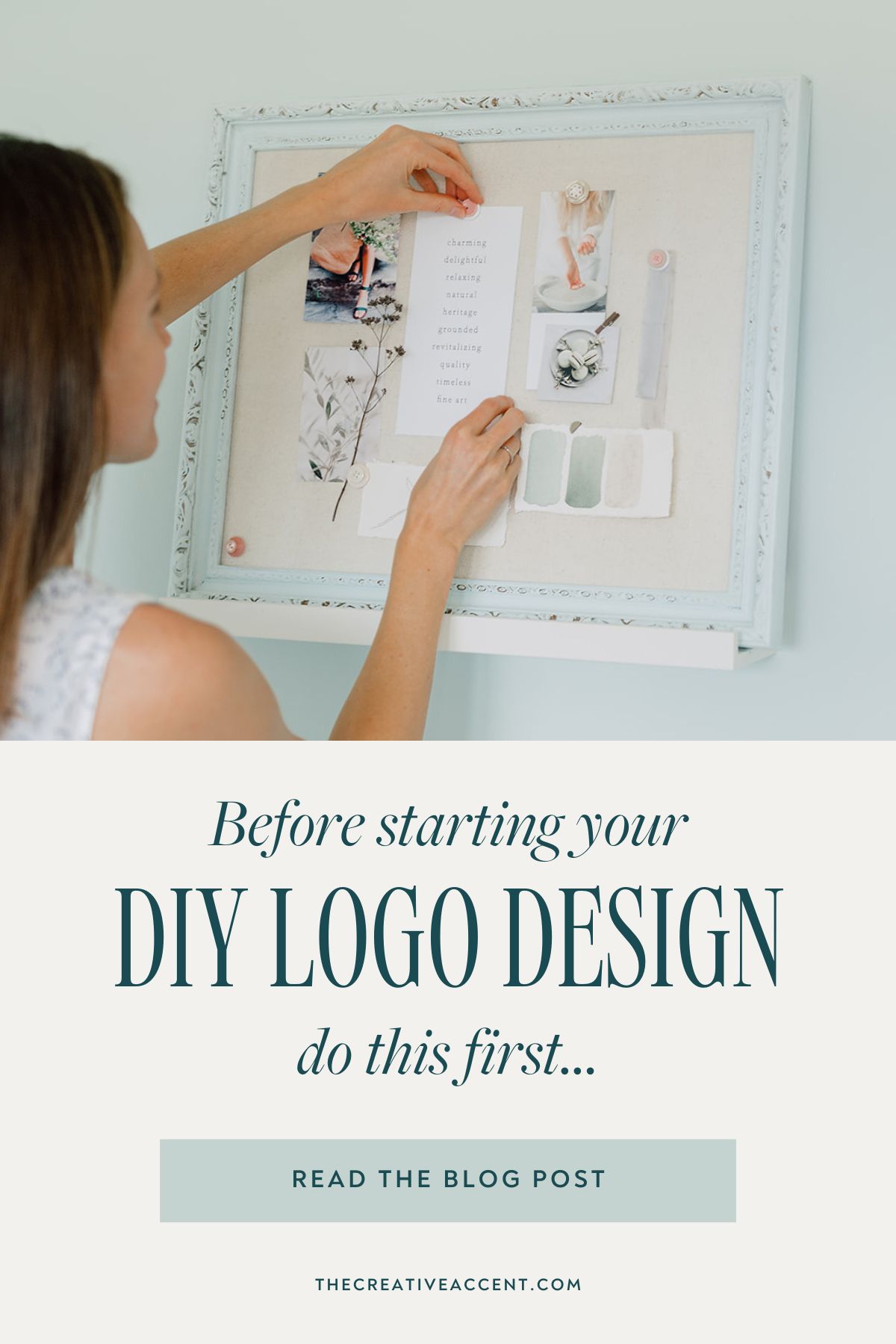
What is a diy logo design and is it right for your business?
DIY stands for “Do It Yourself”. There are several reasons to DIY your logo design and many tools to help you do it. Designing the brand identity for your own business can be exciting and fun for the expressive soul who loves to learn new skills and flex their creative muscles. It is also the most inexpensive option if you are working with a small budget like many other startups.
However, what you save in money expect to spend on YOUR TIME, especially if you aren’t familiar with best design practices or using design software such as Adobe Illustrator.
As outlined in The Ultimate Guide to Branding for Your Business, there’s a lot to consider when you choose the DIY design route. Beyond the logo design itself, there are important brand assets like a strategic color palette, font pairings, photography, and logo variations you’ll want to include as part of a full, cohesive brand identity.
If you’ve decided to DIY your logo, keep reading. Putting a clear brand strategy in place will take away so much overwhelm from the entire process!
The Three Pillars of Brand Strategy
Designing without clarity is a recipe for frustration. While there are MANY moving parts in developing a brand identity, think of your brand strategy as the big picture plan. It will help you keep your eye on the end-goal when you get lost in the details of color palettes, fonts, and logo design ideas.
Here’s an overview of how these strategy pillars work together to shape the visual direction of a brand and a look at the process behind my 1:1 Brand Strategy Intensives.
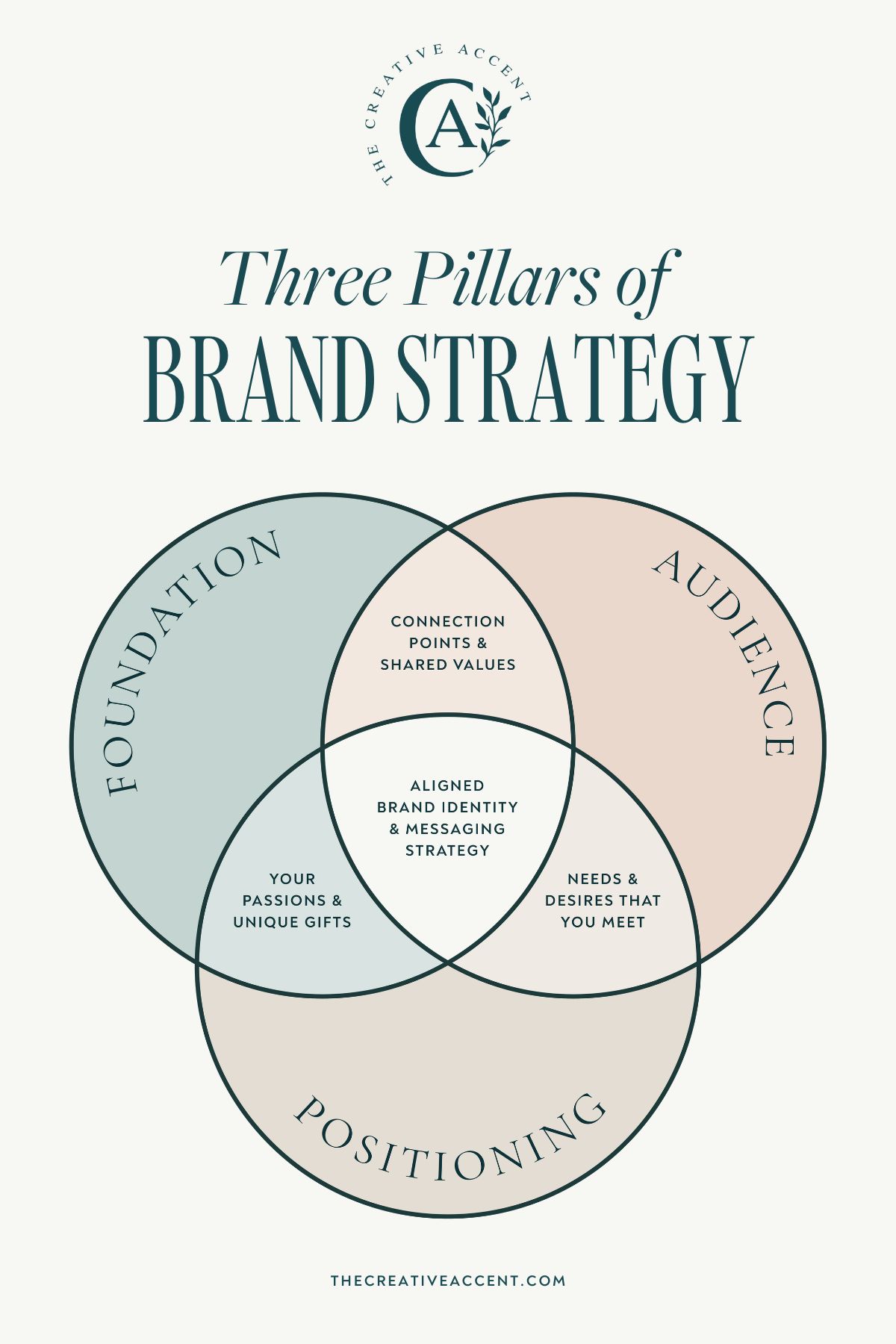
Strategy Pillar 1: Your Brand Foundation
Laying the foundation is an integral part of understanding the essence of your business. This includes defining your purpose, vision, and core values. In a nutshell, this is YOUR WHY and the long-term vision you have for your business. Establishing a clear brand foundation is important because it helps you better understand what you stand for and the impact you want to make in the industry.
In my experience, defining a brand’s core values is one of the key factors to unlocking a visual direction that truly aligns with the business. This is especially true for finding the right color palette!
Not sure how to define your core values? See below for 4 practical questions to help!
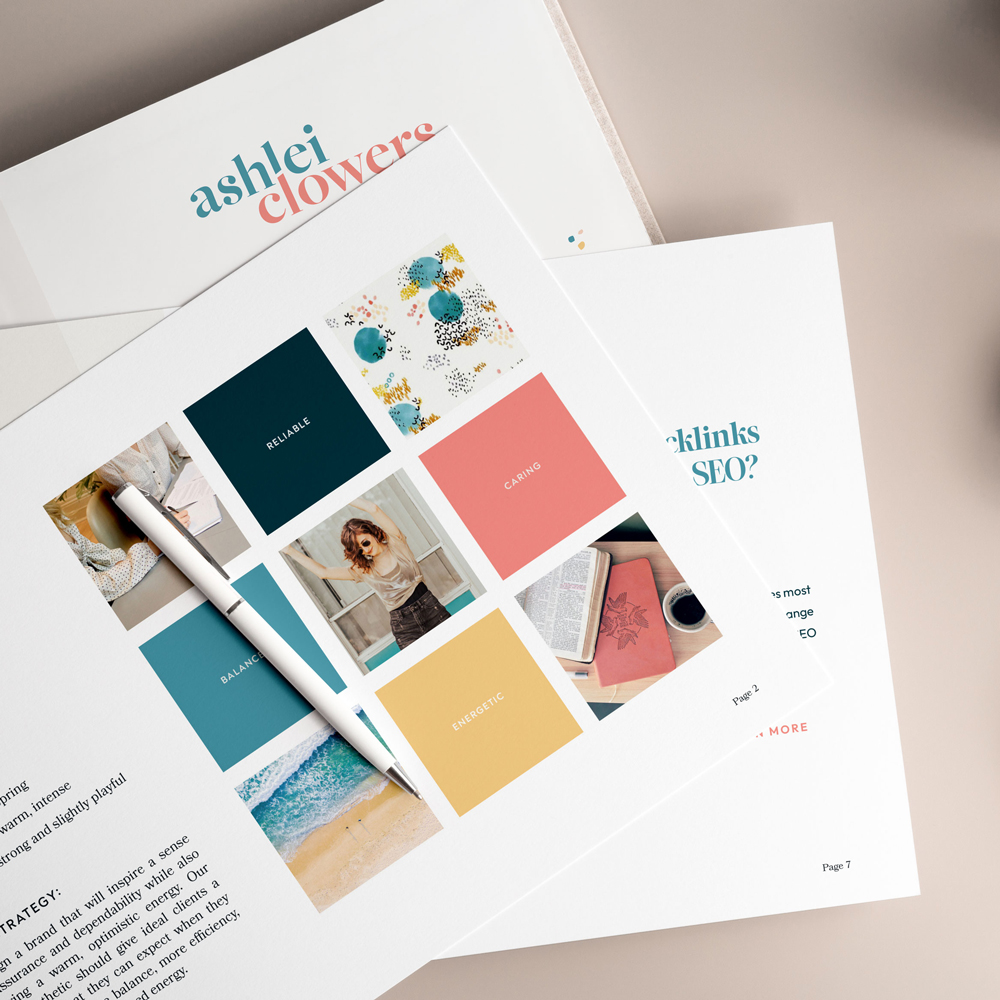
4 Questions to help define your brand’s core values:
- What’s the biggest act of kindness you can receive?
- What can clients be sure to get when working with you?
- What inspire you about your industry?
- Which mistakes (by you or colleagues in the industry) frustrate you the most?
See this reel on Instagram for a practical breakdown of how these questions connect to your core values.
Strategy Pillar 2: Audience Insights
Understanding the audience you want to serve is essential to helping your brand connect and communicate effectively. Gathering the right insights means looking at your ideal client from a variety of angles: the demographics, their personality and values, what attracts them, what they struggle with, and more.
The more clarity you gain here, the more effective your messaging (and therefore your marketing) will be. Understanding your ideal clients also plays an important role in design, namely the look and feel of your logo and brand identity.
Practical Question: What’s the real benefit you want to help your client’s achieve?
Is it a support system or sense of community? Consider fonts with rounded corners and hand-drawn graphics that feel approachable and down-to-earth. Want your clients to feel reassured and at peace? This can be reflected in a muted, calming color palette.
Strategy Pillar 3: Brand Positioning
A strategic position in the market means defining your brand’s niche and highlighting the qualities that set you apart. In this step, it’s important to identity what makes your brand different, why customers love doing business with you, exploring unmet needs in the market, and much more. As your brand’s positioning starts to take shape, your brand persona will follow.
Even in seemingly saturated markets, you can find clever ways to help your brand stand out among the crowd, and brand design can help you achieve this!
Practical Exercise: Study your competitors! Not to copy what they are doing. The whole point is to stand out right? Study the competition to see how you can design the look and feel of your brand differently.
Translating strategy into a diy logo design
Once the brand strategy pillars are defined in writing, it’s time to translate them into visuals. But don’t rush into the DIY logo design just yet! First, create a MOOD BOARD for your brand.
A mood board is simply a collection of photos, colors, and other design elements (such as textures or fonts) that create a vibe around your brand. This is a visual snapshot of where you want to take your brand design. Pinterest is a great place to start collecting inspiration.
Assemble your mood board in the design tool of your choice and keep it close by as you start on your DIY logo design. Looking for a mood board template? Inside my Brand Strategy Mini Course, you’ll find a series of Canva templates that will help you create a mood board, brand style guide and more.
Below are a few examples from The Creative Accent portfolio that highlight the mood board design that served as the catalyst for designing an aligned brand identity.
Kendra’s Events
Kendra’s Events is a luxury wedding planner and floral designer based in Fort Worth, Texas. This rebrand focused on elevating the brand and website design to attract more qualified leads for her high-end services.
By starting with the brand strategy intensive, we were able to define her keywords (Elevated, Passionate, Attentive, and Genuine), which shaped the new look and feel for her brand. See the resulting brand identity here.
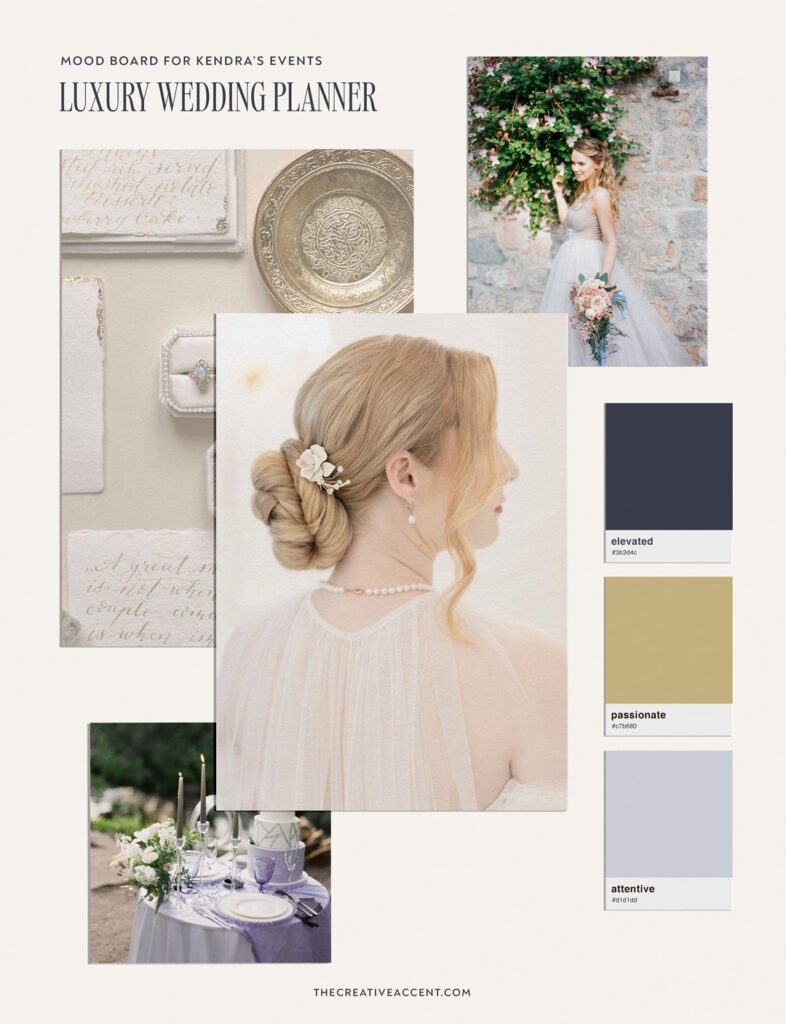
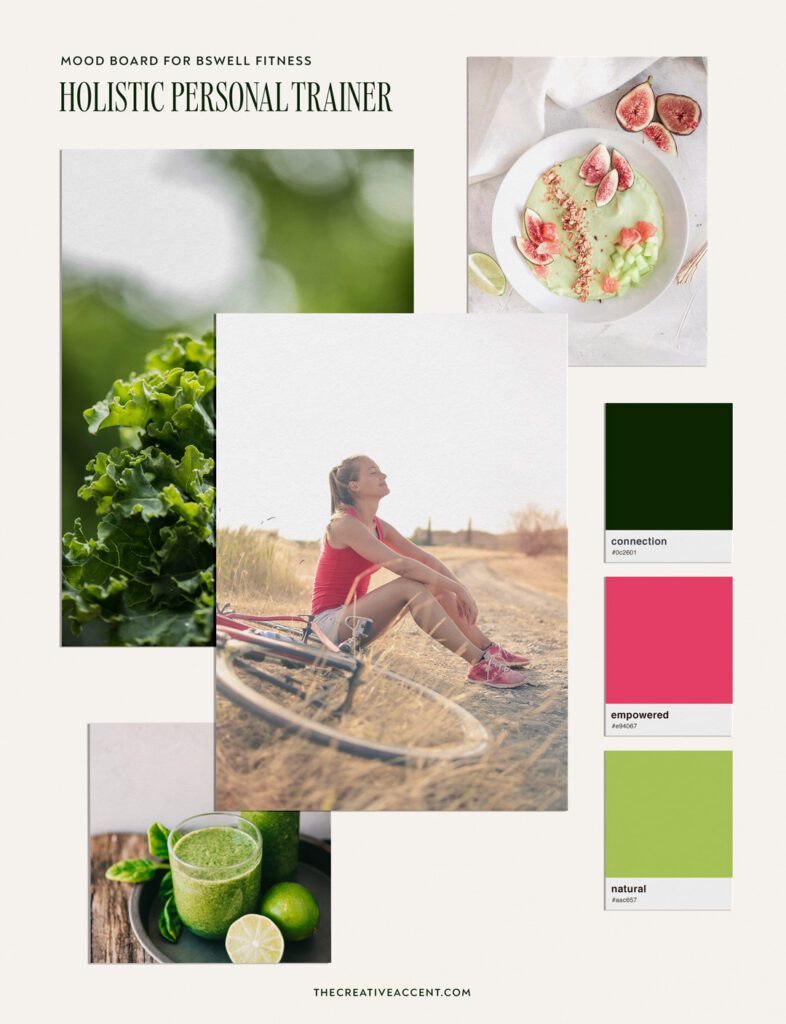
BSwell Personal Trainer
Bonnie is the vibrant wellness coach and certified nutritionist behind BSwell. She came to me for a fresh brand identity and website design to help her new business grow and attract more clients.
After the strategy workshop, it was clear that BSwell’s new brand design should be infused with an inspiring, positive energy that also feels grounded, connected and reassuring. Explore the full case study here.
Brand strategy solutions to help with your diy logo design process
Whether you’re planning to design your own logo or to hire a professional for custom brand design, strategy is a step that cannot be overlooked. Trying to design without a strategy only leads to overwhelm and frustrations like:
- not knowing how your brand should look and feel
- being easily swayed by the latest trends
- the temptation to copy what your competitors are doing
- inconsistent styling that undermines client trust
- ending up with a brand identity that doesn’t establish your credibility or connect with your audience
Don’t let confusion and the constant noise of what everyone else is doing keep you from building the brand of your dreams! I’ve got two strategy resources to help you cut through the noise and finally gain the clarity you need:
Design Aligned – A DIY brand strategy mini course
Designed for the DIY enthusiast, this mini brand strategy course breaks down my signature strategy framework into a simple, step-be-step process to help you design a brand with intention. It will walk you through how to define your brand’s foundation, understand who your ideal client is, and position strategically. You’ll also learn how to translate those insights into colors, fonts, and logo styles that align with your business.
Not only does the Design Aligned course contain video tutorials and interactive brand strategy workbooks for each of the three pillars, it also includes professionally-designed Canva templates for your mood board, brand style guide, brand persona, and more.
1:1 Brand Strategy Intensive
Still prefer the 1:1 support from a professional designer? The Brand Strategy Intensive is the consulting solution your brand needs to communicate with confidence and clarity. You’ll walk away with a clear brand messaging strategy and visual direction (mood board) for your business.
No more countless hours spent fumbling through 15 freebies and 45 open tabs. With the options above, you can finally gain the brand clarity you’re looking for and learn how to translate that into an aligned brand identity for your business.
